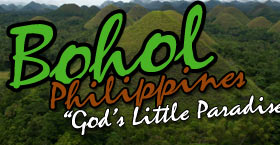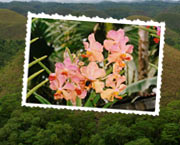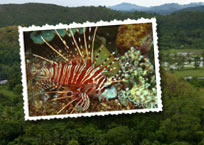Boholano Fruits
IJsselstein, Thursday, 17 May 2001 (updated: Saturday, 28 January 2006)
Mangga (Mangifera Indica Linnaeus)
| Language | Name |
| Cebuano | mangga |
| Tagalog | mangga |
| Malay | mangga |
| Bahasa | mangga |
| English | mango |
| German | Mango |
| Dutch | mango |
| Spanish | mango |
| French | mangue |
The mango is rightly the king of fruits; its sweet taste is universally appreciated. Originally, the mango tree comes from India and Burma, but already in the sixteenth century had been spread across most of tropical Asia; some had already been brought to Southeast Asia by Buddhist monks in the fourth and fifth centuries, and is now present in all tropical countries. The mango tree is a large evergreen tree with a dark green, umbrella-shaped crown, that can grow up to twenty meters tall. It has simple, leathery, oblong-lanceolate leaves, about 30 long by 3 to 5 cm wide on flowering branches, and up to 50 cm on sterile branches. Young leaves are red, but older leaves turn green. Shiny dark green when exposed to the sunlight, or lighter green when underneath. The small greenish white or pinkish flowers grow on a much branched panicle. The flowers are radially symmetrical, and usually have 5 petals, streaked with red. Both male and bisexual flowers grow on the same tree. The mango fruit is irregularly egg-shaped, and between 8 and 12 cm long, but some varieties can grow as big as 30 cm. The skin is smooth greenish-yellow, sometimes partly red. The underlying yellow-orange flesh varies in quality from soft, sweet, juicy and fiber-free in high-quality varieties to turpentine-flavored and fibrous in wild seedlings. The single flat seed is encased in the white fibrous inner layer of the fruit.
Mangos are grown in over a dozen varieties in various tropical countries, each country having a preference for a specific type. At the U.P in Los Baños, no less than fifty different cultivars are kept. However, in the Philippines, and on Bohol, the most common type is the 'carabao' cultivar. When ripe, this variety has a smooth, yellow, and thin skin. The flesh is yellow, very tender and melts in the mouth with delicate aromatic flavor. The fruit's fiber is medium-coarse, short, and confined almost entirely to the edge of the seed. When eaten ripe, it is normally sliced into three parts along the flat seed.
Although most westerns only know mangos in their ripe, yellow or yellow-orange state, among Filipinos, the green unripe fruits are also very popular. It is then eaten with bagoong, a salty kind of shrimp-paste, or just plain salt or sugar. Pregnant women are well known to crave for sour mango during the first three months of their pregnancy, and are infamous to send out their husband in the middle of the night, during a heavy tropical rainstorm, to obtain it.
More information The Mango Information Network has a lot of information on Mangos and the growth of Mangos in the Philippines. The Fruits & Nuts Information Center also provides a wealth of information.
Saging (Musa spp.)
| Language | Name |
| Cebuano | saging |
| Tagalog | saging |
| Malay | pisang |
| Bahasa | pisang |
| English | banana |
| German | Banane |
| Dutch | banaan |
| Spanish | plátano |
| French | banane |
Most westerners who arrive in a tropical country for the first time will be amazed about the sheer number of varieties of bananas. Grown up at home with just one type, the range of sizes, colours, and flavours is somewhat of a revelation.
Also the western idea of a 'banana tree' will need revision. The banana fruit actually grows on a huge, fast growing perennial plant. Banana plants are one of the most useful tropical crops. The huge leaves are used for packing your lunch and puto, bud-bud, and soman, local delicacies made out of rice or sticky rice. Furthermore, they can serve as a makeshift umbrella. The stem of the banana-plant is used as pig fodder. The banana fruits themselves grow in clusters (hands) on a large stem that first carried the small white flowers. At the end of the flower stem is a large purple bud, called puso, which is eaten as a vegetable. The fruits themselves can be eaten raw, cooked, or fried.
The banana plant is a native of the Indo-Malaysian region, but has now spread to all tropical countries. On Bohol you won't find the large banana plantations as can be found on Mindanao, but you'll find banana plants almost everywhere.
If you're in a more relaxed mood, you can sing along with Harry Belafonte's Banana Boat Song.
Guayabano (Annona muricata)
| Language | Name |
| Cebuano | guayabano; duyan |
| Tagalog | guayabano |
| Malay | durian belanda |
| Bahasa | sirsak |
| English | soursop |
| German | - |
| Dutch | zuurzak |
| Spanish | guayabano |
| French | - |
The soursop is a native of northern South America, but it was one of the first fruit trees to be introduced in Asia by European explorers. The name soursop is derived from the Dutch zuurzak or sour sack, after its somewhat acidic flavour. The Dutch name is still in use Indonesia, and Malay, it is called a durian belanda, literally a Dutch durian. However, apart from the remotely similar shape, the fruit is quite different from the durian. The flesh is white, soft, and very juicy, and has a delicous sweet-sour taste. Embedded in the flesh are a large number of darkbrown seeds. The yellow flowers can appear anywhere on the trunk, and will develop in a green, irregularly shaped fruit with many short, soft spines. When nearly ripe, the fruit will have to be picked, because, if it is allowed to fall, it will be smashed. It will then take a few days to fully ripen, and must be eaten within a few days. The fruit needs to be handled with much care, which is probably the main reason you'll never see them outside the regions where they are grown. The fruit is also often used for making refreshing drinks. The season for soursop is roughly from August to November.
More information on the soursop is available in Fruits of warm climates, pp. 75-80 by Julia F. Morton.
Durian (Durio zibethinus)
| Language | Name |
| Cebuano | durian |
| Tagalog | durian |
| Malay | durian |
| Bahasa | durian |
| English | durian |
| German | - |
| Dutch | durian; stinkvrucht |
| Spanish | - |
| French | - |
No fruit is as controversial as the Durian. "Smells like hell, but tastes like heaven," is a commonly heard saying, and, to be honest, it will take most people who're not from Southeast Asia some time to appreciate its taste. In Dutch it is even known by the unflattering name stinkvrucht; bad-smelling fruit. The famous naturalist Alfred Russel Wallace, in his Malay Archipelago, Vol. 1, however, claims the durian tastes like "a rich butter-like custard highly flavoured with almonds [...] intermingled with it come wafts of flavour that call to mind cream-cheese, onion-sauce, brown sherry, and other incongruities. Then there is a rich glutinous smoothness in the pulp which nothing else possesses, but which adds to its delicacy. It is neither acid, nor sweet, nor juicy; yet one feels the want of more of these qualities, for it is perfect as it is. It produces no nausea or other bad effect, and the more you eat of it the less you feel inclined to stop. In fact to eat Durians is a new sensation, worth a voyage to the East to experience."
More Information
The California Rare Fruit Growers has more information on various tropical fruits.
Jeroen Hellingman
What readers think...
| alistair vig wrote: |
| Saturday, 21 April 2018 00:02:22 PHT |
| could anybody tell me where i can find a list of plants and fruit trees that will grow well in panglao. I am planning t make an eco resort there and would like to know which kind of fruit trees , plants and flowers will grow well in the highway location of libaong thank you for any suggestions |
| Ester Espinosa wrote: |
| Wednesday, 17 January 2018 17:18:46 PHT |
| asa ta kapalit og seedlings sa nangka nga hinugon kana sotsot ang liso |
| Yan wrote: |
| Monday, 23 October 2017 23:19:03 PHT |
| Knsay naka ila og An-an nga prutas Kanang gamay na lingin Kong mahinog Kay black dili lumboy gamaygamay pa Ana.unsay inengilsh Ana .... please reply back.... |
| Robbie Cagumbay wrote: |
| Thursday, 4 February 2016 06:35:42 PHT |
| Mupalit mo og pinya from Bukidnon? |
| Pedrito Quiamjot wrote: |
| Sunday, 15 April 2012 16:42:49 PHT |
| Fiesta na sab sa Loay. Hanap ko Lauya ug Sinangag baboy. Maayo sab humol humol sa dagat diha sa may Botoc, Laguna. Be in Bohol this May. Maajong Fiesta. |
Read all 68 comments by readers.
Also give your comments on this article
We reserve the right to remove or edit comments posted on this website. Please read our conditions of use for details. You can use <i>italics</i>, <b>bold</b>, <p> new paragraph, <a href="url">link</a>. Other markup will be removed. Use of the forums for advertising is prohibited. Enterprises located in Bohol can request to be added to the business directory.
 Printer friendly version
Printer friendly versionThis article has been viewed 288 times.
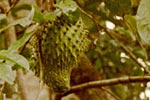
Duyan
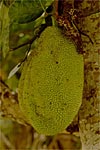
Jackfruit
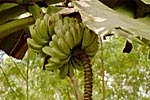
Banana
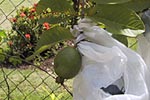
Guava
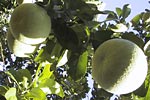
Buongon
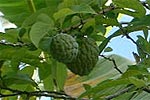
Atis
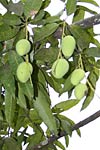
Mangos
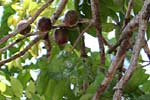
Seriguelas
